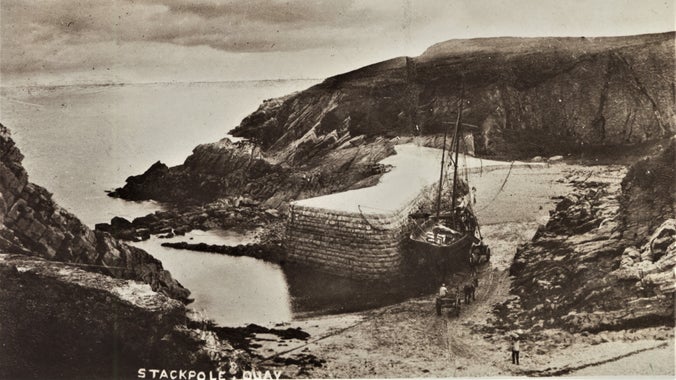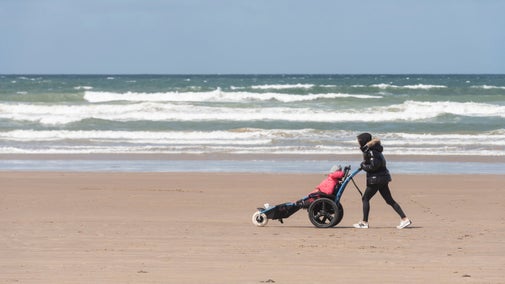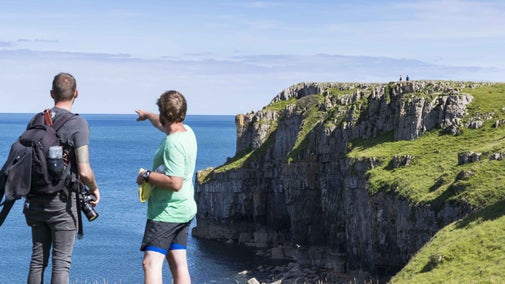
Stackpole's collections
Explore the objects we care for at Stackpole on the National Trust Collections website.

From Bronze Age standing stones to Iron Age field patterns and coastal promontory forts, Stackpole’s landscape is scarred by human activity, giving us a fascinating insight into the past. Discover more about the history of the area right up to the decline of the estate following the Second World War.
It’s difficult to imagine the many buildings that may have graced the Stackpole Court site over the centuries. Occupied since Norman times, the Stackpole Estate has seen its fair share of boom and bust over the centuries and changed hands numerous times.
First signs of human activity at Stackpole. We have a standing stone and a burial chamber dating back to the Bronze Age. Can you find the Devil's Quoit on Stackpole Warren? Whereas once it was considered a burial site, it's now thought to have been a ceremonial gathering place.
Iron Age people built coastal forts to protect themselves from attack. There are two at Stackpole: Greenala is on the coast between Stackpole Quay, Freshwater East and Fishpond Camp was once on the coast but isn't any longer.
The Romano-British settlement site has the remains of livestock enclosures and hut circles. The area would have looked very different – no lakes and no pine trees and probably a lot of small fields or enclosures with rough stone walls.
The earliest known owner of Stackpole was Elidyr de Stackpole, who’s mentioned by Gerald of Wales in 1188. There’s a monument to him in Stackpole Elidor church. The Normans' legacy is the pattern of surrounding villages and churches that we know today.
The estate passed by marriage from the de Stackpoles, through the Vernon and Stanley families. Rabbits were farmed on Stackpole Warren, after they were introduced by the Normans, whether for sport or food, we don’t know.

The Lort family were Royalists and took the side of King Charles I in the English Civil War. They were originally the Stanley’s stewards and bought the estate in 1611. After Stackpole Court was besieged during the Civil War, Legend has it that Roger Lort hid in a cave near Barafundle Bay to avoid being captured. After a short siege the Lort’s surrendered.
Elizabeth Lort was the heiress of the Stackpole Estate and she married Alexander Campbell of Cawdor in 1689, who was a university friend of her brother Gilbert.
The Campbells built the early Georgian mansion of Stackpole Court in the Palladian style in the 1730s on the site of the earlier fortified house.
Sir John Campbell II inherited the estate in 1777 and began landscaping work on a grand scale. What was once a valley was later flooded to create the Bosherston Lakes, as part of a designed landscape, and thousands of trees were planted.

Two world wars heralded a century of decline at Stackpole. Half of the estate, around 6,000 acres, was requisitioned by the Ministry of Defence to form Castlemartin Range in 1938.
Soldiers billeted in Stackpole Court removed lead from the roof, which led to dry and wet rot. Sadly, the house was finally demolished in 1963.
Thirteen years later, what was left of this historic estate was broken up and the farms were sold. The coast, woods and lakes passed to the National Trust.

Explore the objects we care for at Stackpole on the National Trust Collections website.
Stackpole Estate is home to all kinds of creatures, from the infamous otters to the largest colony of greater horseshoe bats in Wales.

Tuck into foodie favourites at the Boathouse Tea-room, whilst enjoying spectacular views of Stackpole Quay.

Read the Stackpole Estate's accessibility guide on borrowing mobility vehicles, recommended routes and handy hints on getting around, facilities and things to see and do.

At the Stackpole Estate, it’s all about letting the outdoors move you. Everyone needs nature, and Stackpole has it in spades.
